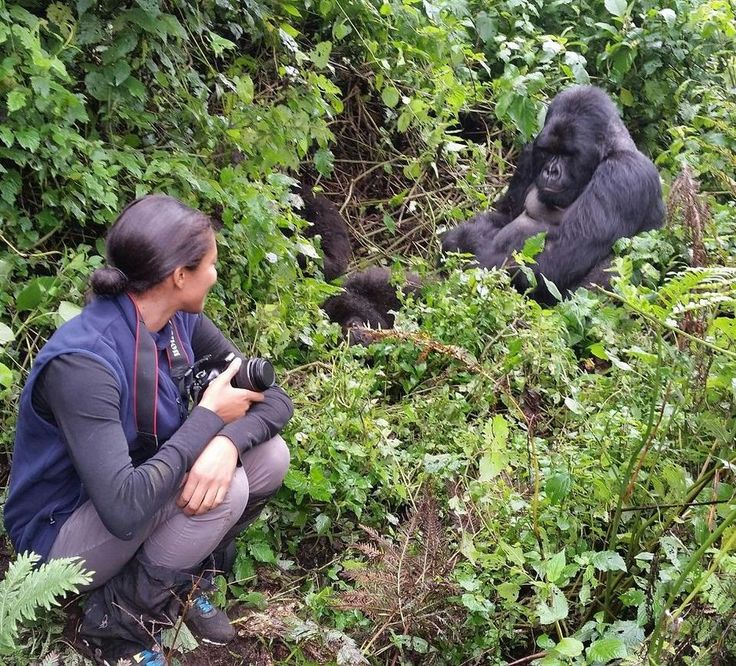Sustainable Gorilla trekking tours
Sustainable gorilla trekking tours are an excellent way to experience the majestic mountain gorillas of East Africa while ensuring the conservation of their habitats and the well-being of local communities. This eco-friendly approach to tourism not only allows visitors to witness these incredible creatures in their natural environment but also supports sustainable practices that protect both the gorillas and the regions they inhabit.
Overview of Sustainable Gorilla Trekking Tours
1. Focus on Conservation
Sustainable gorilla trekking emphasizes the importance of conservation efforts aimed at protecting gorilla populations and their habitats. A portion of the fees collected from trekking permits goes directly to conservation programs, which help fund anti-poaching initiatives, habitat restoration, and community development projects.
2. Community Involvement
These tours actively involve local communities, ensuring they benefit economically from tourism. Local guides, porters, and community members are hired, creating jobs and providing opportunities for income generation. This helps foster a sense of ownership and responsibility towards conservation among local residents.
3. Eco-Friendly Practices
Sustainable tours prioritize eco-friendly practices, such as minimizing waste, reducing carbon footprints, and promoting the use of renewable resources. Tour operators often use environmentally friendly transportation, encourage responsible waste disposal, and work with accommodations that prioritize sustainability.
Key Destinations for Gorilla Trekking
1. Bwindi Impenetrable National Park (Uganda)
- Biodiversity: Home to nearly half of the world’s remaining mountain gorilla population, Bwindi is a UNESCO World Heritage site with rich biodiversity.
- Trekking Experience: Tours are led by experienced local guides who educate visitors about the gorillas and their habitat. The treks can be challenging due to the dense jungle and hilly terrain, but the rewards of encountering gorillas in their natural environment are unparalleled.
2. Mgahinga Gorilla National Park (Uganda)
- Cultural Significance: This park is also home to the Batwa pygmies, an indigenous community that traditionally relied on the forest. Sustainable tours often include cultural experiences with the Batwa, highlighting their history and connection to the land.
- Conservation Efforts: The park focuses on conserving both the gorillas and the unique ecosystem of the Virunga Mountains, where several species of wildlife coexist.
3. Volcanoes National Park (Rwanda)
- Accessibility: Known for its well-developed tourism infrastructure, Volcanoes National Park offers a variety of trekking options, including visits to various gorilla families.
- Sustainability Initiatives: The Rwandan government has invested significantly in conservation and sustainable tourism, ensuring that gorilla trekking benefits both the wildlife and local communities.
4. Virunga National Park (Democratic Republic of the Congo)
- Adventure and Conservation: As Africa’s oldest national park, Virunga is known for its stunning landscapes and biodiversity. Sustainable tours here promote conservation efforts and support local communities impacted by tourism.
- Unique Trekking Experience: Visitors can trek to see both mountain gorillas and lowland gorillas, offering a diverse wildlife experience.
Planning a Sustainable Gorilla Trekking Tour
1. Choose a Responsible Tour Operator
Look for operators that are committed to sustainable practices. They should have clear policies on conservation, community involvement, and eco-friendly initiatives. Checking for certifications from recognized conservation organizations can also help.
2. Understand the Costs
Gorilla trekking permits can be expensive, but they contribute significantly to conservation efforts. Prices vary by country and park, so it’s essential to factor this into your budget. Remember that these fees directly support local communities and conservation programs.
3. Be Prepared for the Trek
Gorilla trekking can be physically demanding. Visitors should:
- Wear appropriate gear: Sturdy hiking boots, long sleeves, and gloves are recommended to protect against thorns and insects.
- Stay hydrated: Bring plenty of water and snacks for the trek.
- Be respectful of the wildlife: Follow guidelines provided by your guides to ensure both your safety and the well-being of the gorillas.
4. Engage with Local Communities
Many sustainable tours include opportunities to visit local villages, where visitors can learn about community projects and support local artisans. This interaction fosters cultural exchange and provides additional economic benefits to local residents.
Conclusion
Sustainable gorilla trekking tours offer an incredible opportunity to connect with one of the world’s most endangered species while contributing to their conservation and the welfare of local communities. By choosing responsible tour operators and engaging in eco-friendly practices, travelers can enjoy an unforgettable experience while playing a vital role in protecting the majestic mountain gorillas and their habitats for future generations.




